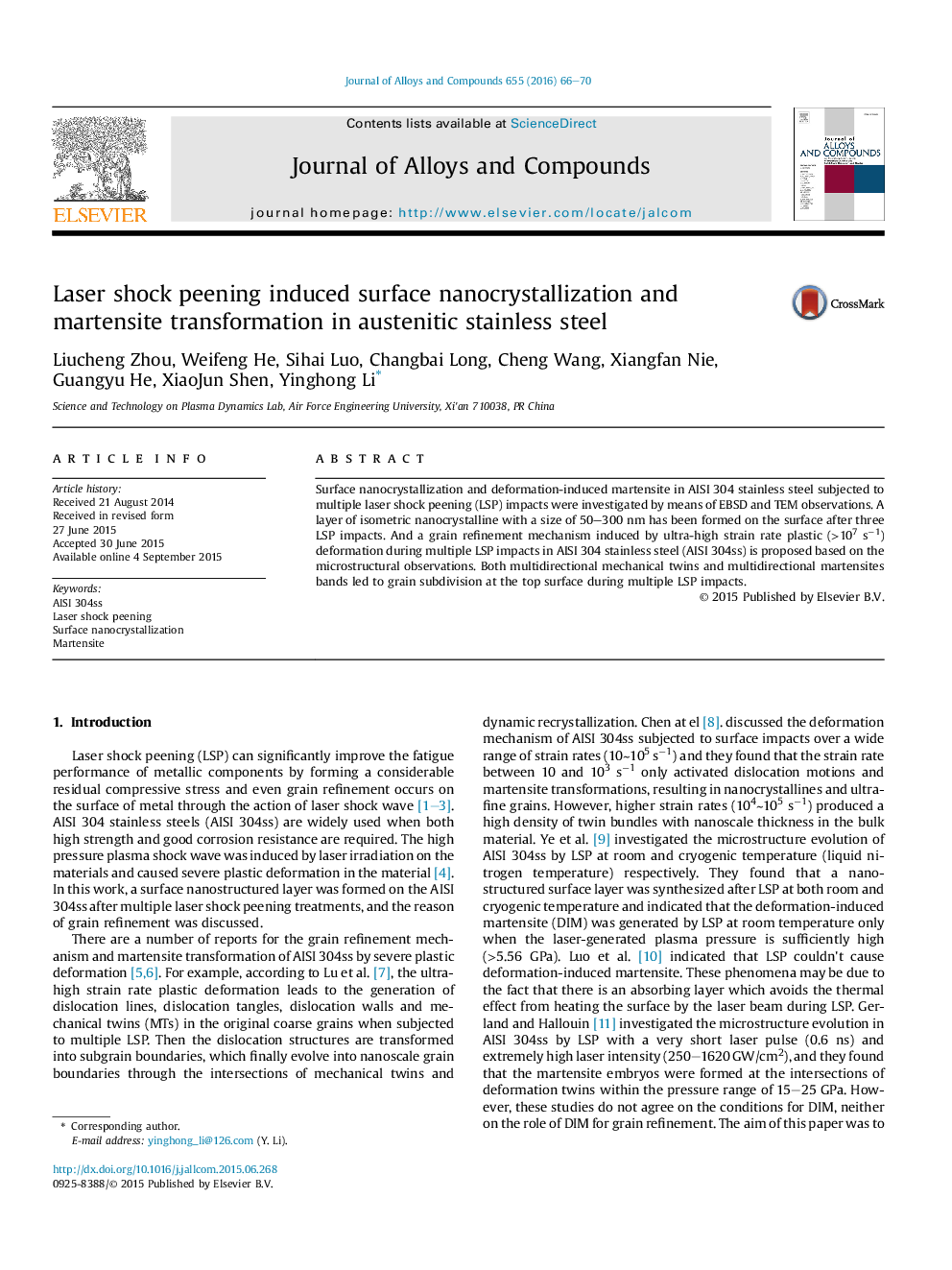| Article ID | Journal | Published Year | Pages | File Type |
|---|---|---|---|---|
| 1607842 | Journal of Alloys and Compounds | 2016 | 5 Pages |
•We founded that a layer of isometric nanocrystalline with a size of 50–300 nm has been formed on the surface of AISI 304 stainless steel subjected to multiple laser shock peening (LSP) impacts.•And we found that the deformation-induced martensite (DIM) is an important deformation mechanism for grain refinement in the top surface at ultra-high strain rates in AISI 304ss subjected to multiple LSP impacts.•The intersectional MTs and DIMs aligned in multiple directions plays an important role in the grain refinement of coarse grains in the surface layer of AISI 304ss.
Surface nanocrystallization and deformation-induced martensite in AISI 304 stainless steel subjected to multiple laser shock peening (LSP) impacts were investigated by means of EBSD and TEM observations. A layer of isometric nanocrystalline with a size of 50–300 nm has been formed on the surface after three LSP impacts. And a grain refinement mechanism induced by ultra-high strain rate plastic (>107 s−1) deformation during multiple LSP impacts in AISI 304 stainless steel (AISI 304ss) is proposed based on the microstructural observations. Both multidirectional mechanical twins and multidirectional martensites bands led to grain subdivision at the top surface during multiple LSP impacts.
Graphical abstractThe formation mechanism of surface nanocrystalline was induced under multiple LSP impacts can be shown in Fig. With the interaction of MTs and DIMs induced by laser shock, the coarse grain evolve continually and eventually a nanocrystalline layer with a size of 50–300 nm is formed in the surface of the AISI 304ss.Figure optionsDownload full-size imageDownload as PowerPoint slide
